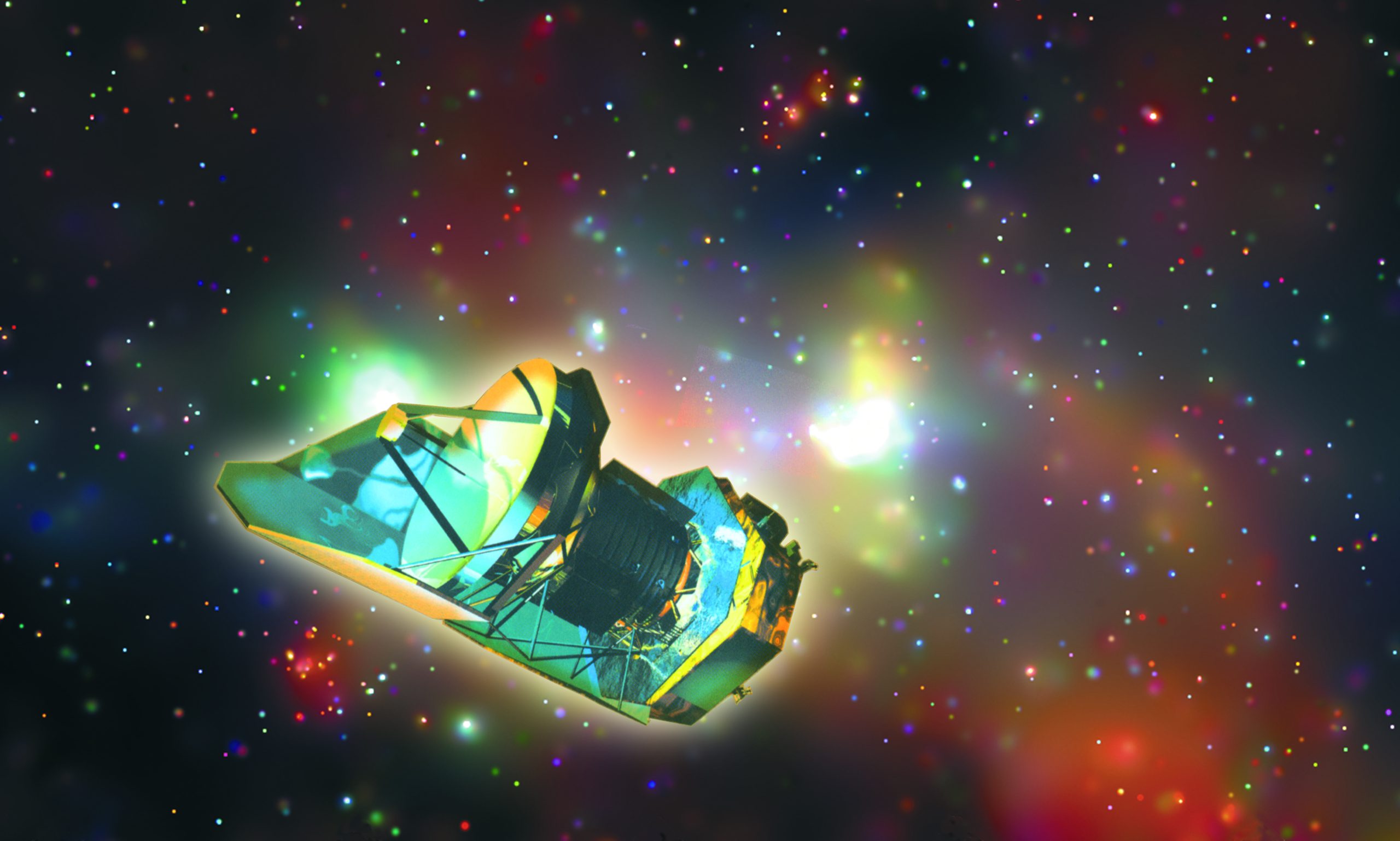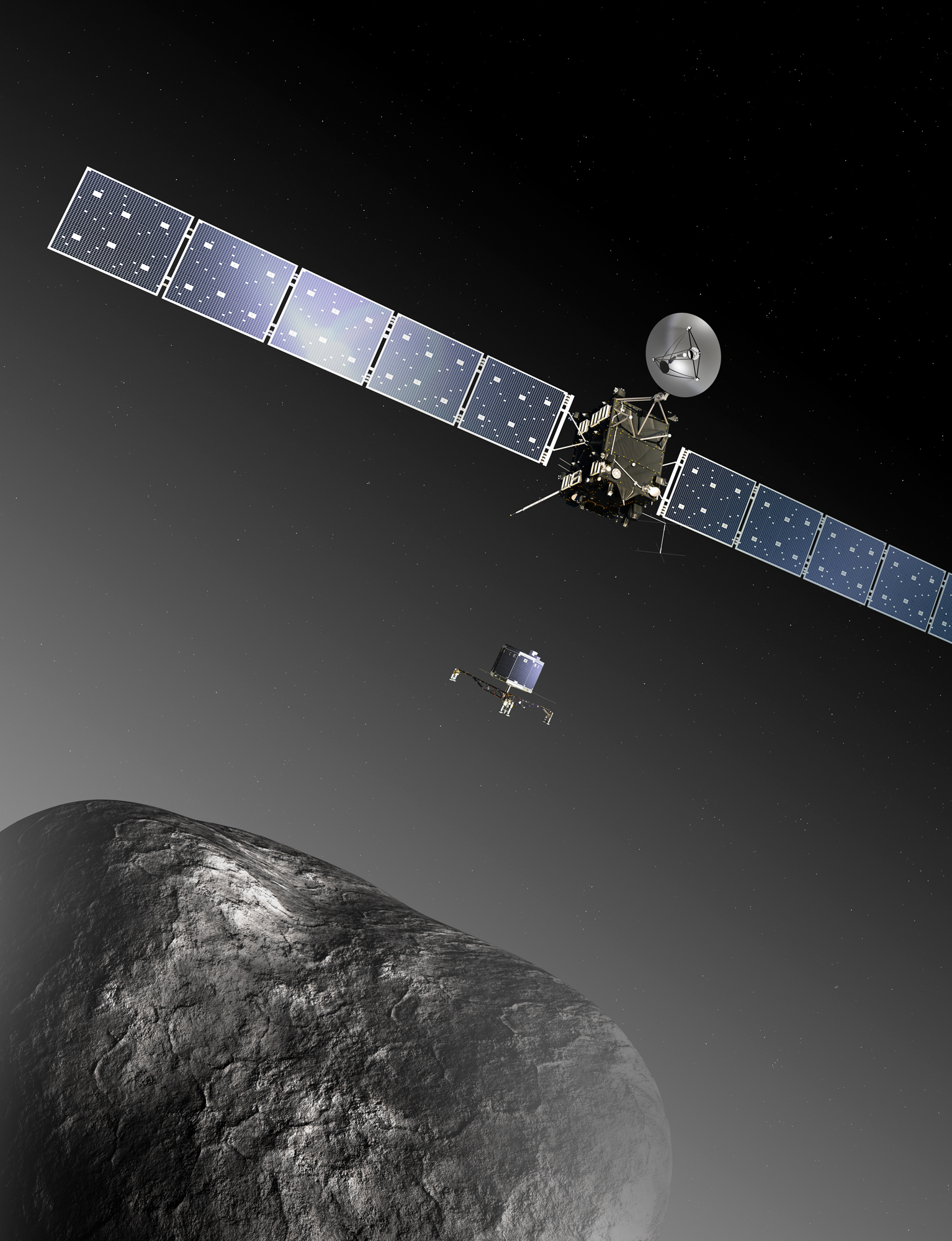Rosetta and Herschel/HIFI: the search for the origin of Earth’s waterAfter its historic landing on 67P/Tchuryumov-Gerasimenko on November 12th, Rosetta has very precisely charted the amount of water on the comet and the ratio heavy/normal water. The Herschel-HIFI mission has done this for a number of objects in space. As such the two ESA cornerstone missions are connected in the search for the origin of Earth’s water.

With the HIFI instrument, Michael Küppers and colleagues found water vapour around the dwarf planet Ceres (2014). It was the first unambiguous detection of water vapour around an object in the asteroid belt. With a diameter of 950 km, Ceres is the largest object in the asteroid belt, which lies between the orbits of Mars and Jupiter. It is thought that Ceres is layered, perhaps with a rocky core and an icy outer mantle. This is important, because the water-ice content of the asteroid belt has significant implications for our understanding of the evolution of the Solar System.
When the Solar System formed 4.6 billion years ago, it was too hot in its central regions for water to have condensed at the locations of the innermost planets, Mercury, Venus, Earth and Mars. Instead, it is thought that water was delivered to these planets later during a prolonged period of intense meteorite impacts around 3.9 billion years ago.
Comets

The big scientific question is whether those meteorites start off as comets (balls of dust and ice that form a tail near the sun) or asteroids (shattered pieces of rock, metal, and other materials)? The evidence seemed to point at asteroids but other HIFI observations suggested that comets also brought large quantities of water to the young Earth. In 2011 Hartogh and co discovered – based on HIFI observations – that the ratio between “heavy” water and normal water in the so-called Jupiter-family comet 103P/Hartley 2 was equal to the value we find in the Earth’s oceans.
The target of Rosetta’s research, the comet 67P/Tchuryumov-Gerasimenko, is also a Jupiter-family comet. Jupiter-family comets have orbits that are primarily determined by the gravitational pull of Jupiter, but probably originated in the Kuiper Belt. Astronomers think that these bodies – pristine remnants of the formation of the planets – can tell us a lot about the birth of our solar system.
Astronomers expected to find that 67P/Tchuryumov-Gerasimenko has the same heavy/normal water ratio as 103P/Hartley 2. But the first research results from Rosetta suggest that the heavy water/normal water ratio of 67P is different: there is more heavy water per normal water in 67P than on Hartley2 and Earth. More even than in long-periodic comets measured so far. What the implications are for the origin of the water in Earth’s oceans is unclear at this moment. But it seems the Rosetta evidence points at asteroids rather than comets as Earth’s main water bearers.
More Rosetta results
More information is expected to come from observations of Rosetta when the orbiter moves nearer to the Sun. Fountains of water will then spout from of the surface of the comet. Also comparisons with carbonaceous chondrite asteroids containing sufficient amounts of water might shed new light on the subject. Also researchers at SRON have recently been funded by the NWO PepSci program to calculate the delivery rate of water from main belt asteroids. In the future, a HIFI-type mission could measure the water content and isotope ratio in a large number of comets and asteroids.


